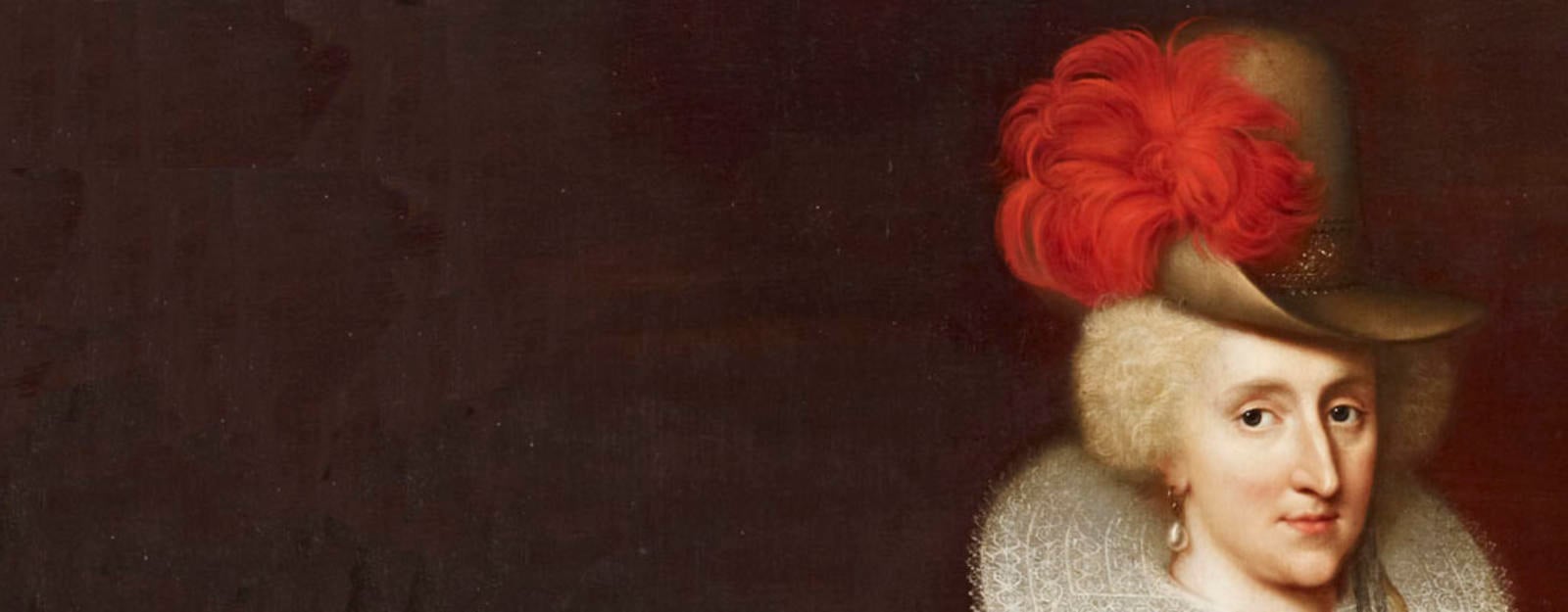Anne of Denmark, Queen of Great Britain (1574-1619)

- Born 1574, Skanderborg Castle [Jutland]
- Died 1619, Hampton Court Palace
Anne was the daughter of Frederick II, King of Denmark. She married James VI of Scotland in 1589. Anne was mother of eight children, only three of whom survived childhood - Henry, Prince of Wales, Charles I and Elizabeth of Bohemia ('The Winter Queen'). Anne (pronounced 'Anna') was cultured and engaged with the arts, bringing a love of painting and music to the Stuart court and passing it on to her children.
In one of Paul van Somers's portraits of Anne, she is depicted with an imaginary building behind her alluding to her interest in architecture. Through Anne and her patronage of Inigo Jones, a well-travelled and learned architect, the style of the Italian architect, Andrea Palladio, came to palace architecture at the Queen's House at Greenwich, the Queen's Chapel at St James's and the Banqueting House at Whitehall. The last of these was used to stage theatrical performances or masques, which celebrated the monarchy with music and elaborate costumes, and Anne was again a great patron.
It is difficult to document Anne's painting collection very exactly, as artists' names are not recorded in her inventories, but she was known to have collected mythological and religious subjects, (examples could be the Rubens ). A splendid early Netherlandish work by Van der Goes is recorded in her inventories. Made in 1478 it depicts the Scottish King James III and his wife, Margaret of Denmark and is likely to have had significance for both Anne and James I. Anne also commissioned several portraits.
Robert Cecil, Earl of Salisbury stated, rather critically, that she preferred spending time with 'dead pictorres' and indeed she agreed with him. When she was dying at Hampton Court in 1619 she had several of her favourite works brought to her there, perhaps most obviously for religious reasons.